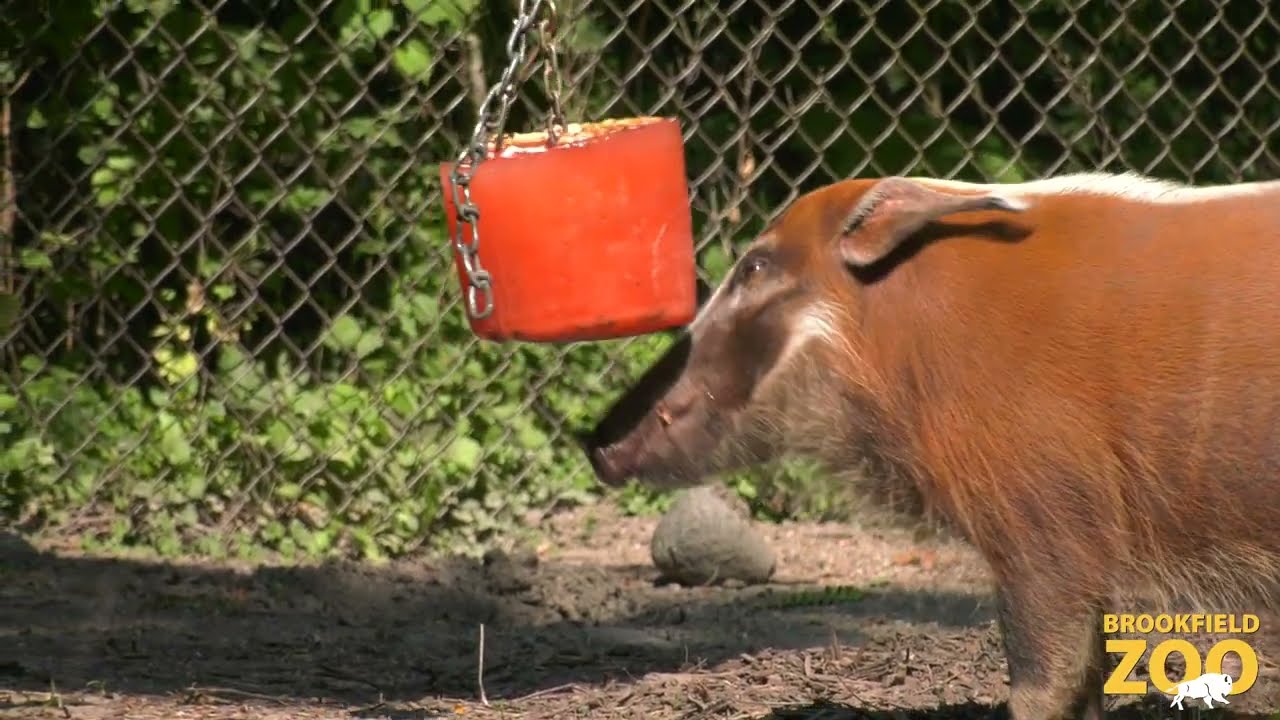Summary:
1. Introduction to Red River Hogs
2. Description and Physical Characteristics
3. Habitat and Range
4. Social Behavior and Communication
5. Diet and Feeding Habits
6. Unique Adaptations and Defense Mechanisms
7. Conservation Status and Threats
8. Animal Care at Brookfield Zoo
9. Keeping Cool in the Summer Heat
Unveiling the Enigmatic Red River Hogs and Brookfield Zoo’s Cool Treats!
Welcome to an exciting journey into the intriguing world of the Red River Hogs! These extraordinary creatures possess unique and fascinating qualities, making them a truly captivating species in the animal kingdom. Join us as we delve into their physical characteristics, habitat, social behavior, and diet, and even explore how the animal care staff at Brookfield Zoo ensures their well-being during scorching summers.
Description and Physical Characteristics:
Red River Hogs, scientifically known as Potamochoerus porcus, are native to the forests and swamps of Sub-Saharan Africa. These charismatic mammals showcase a stunning blend of colors, with coarse reddish-orange hair covering most of their bodies, except for a white stripe running from the face to the back. Their tufted ears, which resemble paintbrushes, are an iconic feature of the species.
Habitat and Range:
These hogs find solace in the dense forests and wetlands of Sub-Saharan Africa, specifically inhabiting countries like Senegal, Nigeria, and Ethiopia. They can adapt to different environments, ranging from savannah grasslands to the edge of tropical rainforests. Their remarkable adaptability has enabled them to thrive in regions with extreme temperatures and varying humidity levels.
Social Behavior and Communication:
Red River Hogs are highly social, forming cohesive groups known as sounders. Sounders typically consist of one or two adult males, multiple adult females, and their offspring. Communicating within this social structure is crucial, and the hogs employ a diverse range of signals, including snorts, grunts, and other vocalizations, to convey messages of warning, territory marking, and social bonding.
Diet and Feeding Habits:
These omnivorous hogs have an eclectic diet that includes various food sources. They are partial to roots, tubers, fruits, nuts, and vegetation in their natural habitats. Additionally, they skillfully forage for insects, small reptiles, snails, and even carrion to supplement their dietary needs. Their strong snout and powerful jaws make it easier to extract hidden delicacies from the forest floor.
Unique Adaptations and Defense Mechanisms:
Red River Hogs possess certain adaptations that aid them in their survival. One remarkable feature is their long, sharp canines used for self-defense and asserting dominance within the social hierarchy. Another notable adaptation is their shortened legs, allowing them to easily navigate through dense vegetation. Additionally, their reddish coat coloration offers a degree of camouflage in their forest habitat.
Conservation Status and Threats:
Unfortunately, the Red River Hog population faces various threats due to habitat loss and hunting. Deforestation and the expansion of agriculture further encroach upon their native habitats, depleting the resources they rely upon for survival. Moreover, these striking animals are often targeted for their meat and other body parts, adding to the urgency of conserving this vulnerable species.
Animal Care at Brookfield Zoo:
Brookfield Zoo prides itself on providing exceptional care to the magnificent Red River Hogs in their care. Animal care staff meticulously cater to their dietary needs, constantly researching for optimal nutrition. They also create enriching environments, simulating the hogs’ natural habitats by providing varied structures, foods, and sensory experiences. Furthermore, veterinary teams conduct regular health check-ups, administer vaccinations, and monitor overall well-being.
Keeping Cool in the Summer Heat:
During scorching summers, when temperatures soar, the animal care staff at Brookfield Zoo never fails to keep the Red River Hogs cool and comfortable. One of their innovative strategies is the creation of ice treats, which provide refreshing relief from the heat. By freezing fruits, vegetables, and even blood in large ice blocks, the zookeepers provide the hogs with entertaining enrichment while helping them regulate their body temperature.
Conclusion:
The fascinating world of the Red River Hogs has unveiled remarkable aspects of their lives, making them an intriguing species to learn about and appreciate. From their stunning physical characteristics to their social behavior and unique adaptations, these hogs continue to captivate researchers and animal enthusiasts alike. Through the tireless efforts of organizations like Brookfield Zoo, we can ensure the preservation of this remarkable species, providing them with a secure future amid a rapidly changing world.
*****
Source Description
How do you stay cool in this heat? Animal care staff has many ways to keep the animals at Brookfield Zoo cool, including ice treats like the one the Red River hogs received a few days ago!
Visit www.czs.org for more information about Brookfield Zoo.


